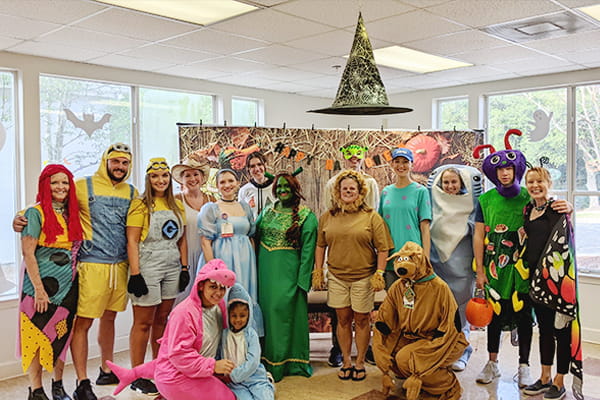“I wanted to provide our community with support for things that my family encountered,” Findley said. “It’s so important that we find ways to make traditions and holidays inclusive and a positive experience for everyone.”
The Autism Center Halloween Practice Event provides a safe environment for kids to practice the art of trick-or-treating by walking through the center hallways, knocking on doors, and asking for candy using any method they prefer to communicate, including the option of pressing a voice button.
Because many children on the autism spectrum process sensory input differently, the sights, sounds and smells of the holiday can be overwhelming. Findley provides tips to make Halloween a fun experience for everyone:
- Costume optional. If your child wants to dress up for Halloween, give them opportunities to practice wearing the costume before a scheduled event. Don't force or try to convince your child to wear uncomfortable masks or clothing. A comfortable shirt with a seasonal design or color is a great alternative to a full costume. If your child chooses to wear a costume, bring a backup outfit in case the child is only able to tolerate the costume for a short time.
- Practice trick-or-treating. While taking your child door-to-door to trick-or-treat is a common tradition, some children may have a hard time with this activity. Consider practicing trick-or-treating before Halloween inside your home. You can also read stories or watch videos of others engaging in the activity. Help your child communicate "trick or treat," "thank you", etc., in whatever way feels right for them. Other forms of communication may be vocalizing, gesturing, or using an alternative communication device, such as a talk button. If your child is not interested in communicating, that's okay, too!
- Be flexible. Alternative options to traditional trick-or-treating may include attending trunk-or-treat events, arranging trick-or-treat stops with friends or family, going to a pumpkin patch, or even having a small Halloween party with close friends or family.
Halloween is a favorite childhood holiday, but it’s important to remember that everyone experiences the holiday differently. Avoid forcing children to say "trick-or-treat" before giving candy, attempting to scare trick-or-treaters, or utilizing bright, flashing decorations. These small interactions appear harmless, but for a child with autism, they can create a negative experience.
For more information about Studer Family Children’s Autism Center in Pensacola and our services for children on the autism spectrum, call 850-416-7548 or click here to visit our website.

